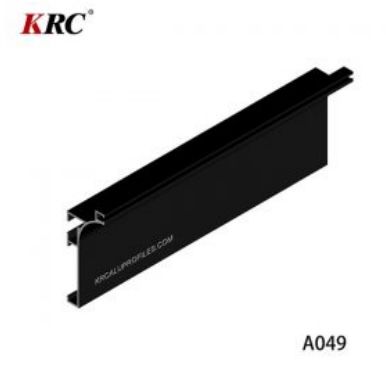Aluminum has long been a material of choice for various industries due to its exceptional properties: lightweight yet durable, corrosion-resistant, and easily moldable. But have you ever heard of G Profile Aluminum? It’s not just aluminum; it’s a design revolution in the world of furniture. In this blog, we’ll delve into the world of G Profile Aluminum furniture and discover what makes it an epitome of elegance and innovation. G Profiles is an important engineering material widely used in various construction projects due to its excellent strength, corrosion resistance, and processing properties. Whats’ more, KRC’s G Profile Aluminum is highly customizable. It’s not just about selecting from a few pre-made designs; it’s about bringing your vision to life. Whether you prefer a sleek and modern look or something more traditional, G Profile Aluminum can be tailored to your exact specifications. It’s your canvas, and the possibilities are limitless.
- Basic Concept of G Profiles
G Profiles are profiles made of aluminum alloy and are primarily categorized into two types: lightweight and heavyweight. Lightweight G Profiles are mainly used in decoration and insulation systems, while heavyweight G Profiles find extensive applications in building structures, bridges, and other fields. G Profiles come in various cross-sectional shapes, including circular, rectangular, and I-shaped, allowing for customization to meet specific application requirements.
- Performance Characteristics of G Profiles
High Strength: G Profiles, with well-designed structures, exhibit high strength and load-bearing capacity, meeting the demands of complex engineering projects.
Excellent Corrosion Resistance: Aluminum alloy possesses good corrosion resistance, making G Profiles suitable for use in natural environments and chemical media, withstanding various corrosive substances.
Superior Processing Properties: G Profiles have excellent processing properties, enabling them to be cut, drilled, milled, and processed into various shapes and sizes to meet diverse engineering needs.
Lightweight: Aluminum alloy is lightweight, making G Profiles lighter than steel, facilitating transportation, installation, and reducing construction costs.
High Aesthetics: G Profiles come in diverse cross-sectional shapes, allowing for customized designs to enhance the aesthetics of buildings or components.
- Manufacturing Methods of G Profiles
The manufacturing process of G Profiles mainly involves melting, extrusion, straightening, and surface treatment. Firstly, aluminum alloy raw materials are melted in a furnace and mixed with alloying elements to obtain qualified aluminum alloy melt. Secondly, the aluminum alloy melt is extruded into the desired shape using an extrusion machine and subjected to cooling and straightening processes. Finally, the semi-finished profiles undergo surface treatment such as polishing, painting, and oxidation to produce qualified G Profile products.
- Application Areas of G Profiles
Building Structures: G Profiles, with their high strength and load-bearing capacity, are widely used in high-rise buildings, bridges, and other structural applications.
Interior and Exterior Decoration: G Profiles, with their lightweight nature, high aesthetics, and ease of processing, find extensive use in interior and exterior decoration projects, including curtain walls, exteriors, and roofs.
Transportation: Due to their lightweight and aesthetic properties, G Profiles are also used in the transportation sector, such as in automotive bodies and train carriages.
Electronics and Electricals: G Profiles have various applications in the electronics and electrical sector, including support structures for electronic components and electrical enclosures.
- Future Development Directions
Enhanced Strength: With increasing demands for structural load-bearing capacity and safety, one of the future directions for G Profiles is to enhance their strength. This can be achieved by using high-strength aluminum alloy materials and optimizing structural designs.
Intelligent Manufacturing: Intelligent manufacturing is a significant future development direction for the manufacturing industry, and the production process of G Profiles is gradually moving towards automation. The introduction of automated production lines and intelligent control systems can significantly improve production efficiency and quality stability.
Sustainability: Aluminum alloys are recyclable, and sustainability and recycling will be emphasized in the future. Promoting the recycling and reuse of aluminum alloy scrap can reduce production costs, resource consumption, and environmental pollution.
